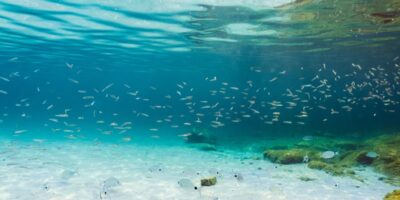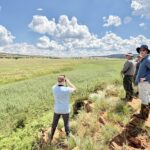With alarming climate change projections and geo-political instability in the traditional energy market, it is no surprise that governments across the globe are looking into accelerating their transition towards renewable energy sources. Offshore wind is a major component in this transition, but as offshore wind continues to develop as an industry, it is becoming increasingly challenging to find suitable sites for new wind farms as the most suitable sites have already been taken.
This means that we will increasingly encounter:
- Deeper water and softer seabeds
- More environmental challenges and increased regulation
- Cumulative impacts between offshore wind farms as more are being built
Approval of an environmental impact assessment (EIA) is required in order to develop and operate an offshore wind farm. An EIA not only presents detailed knowledge about the site conditions and sensitive wildlife but also findings on how the wind farm could potentially impact the local marine environment. Authorities will consider the conclusions of the EIA before giving the green light or not.
The environmental challenges of offshore wind farms include potential negative impacts on sea birds, bats and mammals and impact on fisheries, both during construction and the daily operations once the wind farm is built. The cumulative impact of multiple offshore wind farms can be severe if the site planning is not optimal. These negative impacts must be reduced as much as possible, and the regulatory EIA serves the purpose of making sure this is considered in the approval process.
The trend is moving towards more focus on environmental aspects for offshore wind farm approvals to minimise negative impacts on the environment. An example of this is in the Netherlands, where biodiversity is an important part of the overall selection criteria for the developer to be awarded the contract to build in the Hollandse Kust West wind farm area. This is not only during the construction phase, but we also increasingly see requirements for shut-down on demand to protect birds from colliding with the turbines during wind farm operations.
An alternative to the time-consuming and expensive data collection for the EIA
So, while the EIA is required, the process of collecting data for the EIA is often both long and complicated. Today, the data collection is typically done over a 12-month period, and the approval process can take up to 24 months while the world is in serious need of more renewable energy sources – today.
To collect the data, the wind farm developer typically sends out field teams to investigate site conditions and to count marine birds or marine mammals such as porpoises. This is a time-consuming and expensive approach that often results in a limited data set that may or may not be representative of the entire site or of the impact over a more extended period. Furthermore, existing environmental surveys are typically scattered and can be difficult and time-consuming to locate. The wind farm developer also needs to collect existing data on wind, seabed and current conditions from various data sources.
Just imagine what a difference it would make to the data collection process if these data were readily available online? If just a few clicks could give the wind farm developer or environment agencies access to relevant data required for the EIA.
A vision for the future: a one-stop data portal for a faster EIA process
We need a more efficient and dynamic approach to collecting data for the EIA, which will only gain an increasingly more important role in the approval process in the future as public attention to the environmental impact of offshore wind farms increases.
The good news is that there are already ways to speed up the collection of data for the EIA and to gain even more accurate predictions of environmental impact than what is possible with the limited and fragmented data from field research and individual surveys.
An EIA is always going to require collection of new data – but there is a lot of potential in making existing data available and extending it in an intelligent way through modelling – much like we know it from weather and climate models that are based on calibration and validation input from measurements.
By establishing an environmental digital portal for specific regions of, e.g. the North Sea, wind farm operators will have one go-to portal for all digital data for the site in question. Today, various databases already provide information on currents, wind and seabed conditions. There are also databases with information on shipping routes and marine bird flight routes but these databases are typically not connected and the data contained are often patchy. In fact, a major constraint for fast-tracking the EIA process for offshore wind projects is the restricted access to all the environmental baseline data collected in the past.
A unifying data portal would provide easy access to all data sets relevant for the EIA process, such as meteorological data, waves, currents and water levels, environmental parameters (marine life such as seabirds and marine mammals). But existing activities in the area can also be included, e.g. existing commercial activities and cultural heritage of importance for the approval process.
And imagine then if the portal also enabled access to impact analyses for aspects such as noise impacts or disruption of habitats for marine mammals and collision risks for seabirds. The assessment of noise-related impacts from marine development projects is already mandatory in the US, Europe and other parts of the world.
One portal for faster data collection and more accurate assessments
With a unifying database based on data and modelling, the wind farm developer would not only be able to complete the mandatory and important EIAs much quicker and cheaper. They would also be able to provide a much more accurate assessment of the impact of the new offshore wind farms because the modelling data would enable more comprehensive descriptions of the occurrence of sensitive species and habitats, for example by describing the distribution over longer periods (multiple years).
The benefit would not only be to the wind farm operators but also to the public authorities with the mandate to approve construction of new offshore wind farms. They would be able to make their decisions on a more informed and accurate data basis. This would minimise the risk of negative environmental impacts after construction starts.
And of course, we would all benefit from more renewable energy sources.








